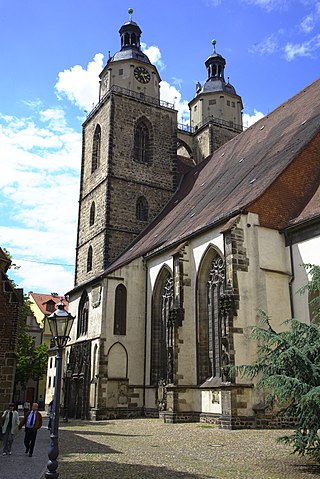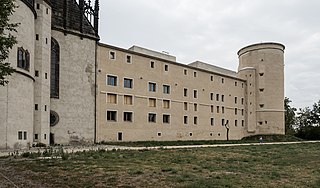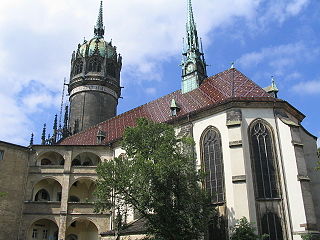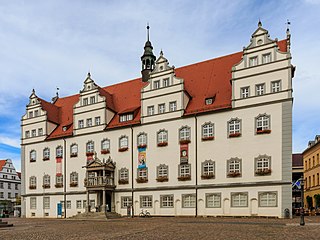Self-guided Sightseeing Tour #1 in Lutherstadt Wittenberg, Germany
Legend
Tour Facts
0.6 km
5 m
Experience Lutherstadt Wittenberg in Germany in a whole new way with our free self-guided sightseeing tour. This site not only offers you practical information and insider tips, but also a rich variety of activities and sights you shouldn't miss. Whether you love art and culture, want to explore historical sites or simply want to experience the vibrant atmosphere of a lively city - you'll find everything you need for your personal adventure here.
Individual Sights in Lutherstadt WittenbergSight 1: Schloss Wittenberg
Wittenberg Castle is the former residence of the Saxon Electors. It was completely rebuilt from 1489 onwards and was one of the most magnificent fortified castles of the early Renaissance in Germany when it was completed in 1525. After fires in 1760 and 1814 and the loss of importance of the city of Wittenberg due to the Schmalkaldic War and the Congress of Vienna, little remains of the building's former glory.
Sight 2: Schlosskirche
All Saints' Church, commonly referred to as Schlosskirche to distinguish it from the Stadtkirche of St. Mary's, sometimes known as the Reformation Memorial Church, is a Lutheran church in Wittenberg, Saxony-Anhalt, Germany. It is the site where, according to Philip Melanchthon, the Ninety-five Theses were posted by Martin Luther in 1517, launching the beginning of the Protestant Reformation.
Wikipedia: All Saints' Church, Wittenberg (EN), Website, Heritage Website
Sight 3: Altes Rathaus
The Old Town Hall of Lutherstadt Wittenberg is located in the centre of the old town on the market square. It is one of the most important buildings of the Saxon Renaissance and was the seat of the Wittenberg city administration from the 16th century to 2000.
Sight 4: Stadtkirche St. Marien

The Stadt- und Pfarrkirche St. Marien zu Wittenberg is the civic church of the German town of Lutherstadt Wittenberg. The reformers Martin Luther and Johannes Bugenhagen preached there and the building also saw the first celebration of the mass in German rather than Latin and the first ever distribution of the bread and wine to the congregation – it is thus considered the mother-church of the Protestant Reformation. In 1996, it was inscribed on the UNESCO World Heritage List along with Castle Church of All Saints (Schlosskirche), the Lutherhaus, the Melanchthonhaus, and Martin Luther's birth house and death house in Eisleben, because of its religious significance and testimony to the lasting, global influence of Protestantism.
Wikipedia: Stadtkirche Wittenberg (EN), Website, Heritage Website
Sight 5: Wittenberger Judensau
A Judensau is a folk art image of Jews in obscene contact with a large sow, which in Judaism is an unclean animal. These first appeared in the 13th century in Germany and some other European countries, and remained popular for over 600 years.
Share
How likely are you to recommend us?
Disclaimer Please be aware of your surroundings and do not enter private property. We are not liable for any damages that occur during the tours.
GPX-Download For navigation apps and GPS devices you can download the tour as a GPX file.


